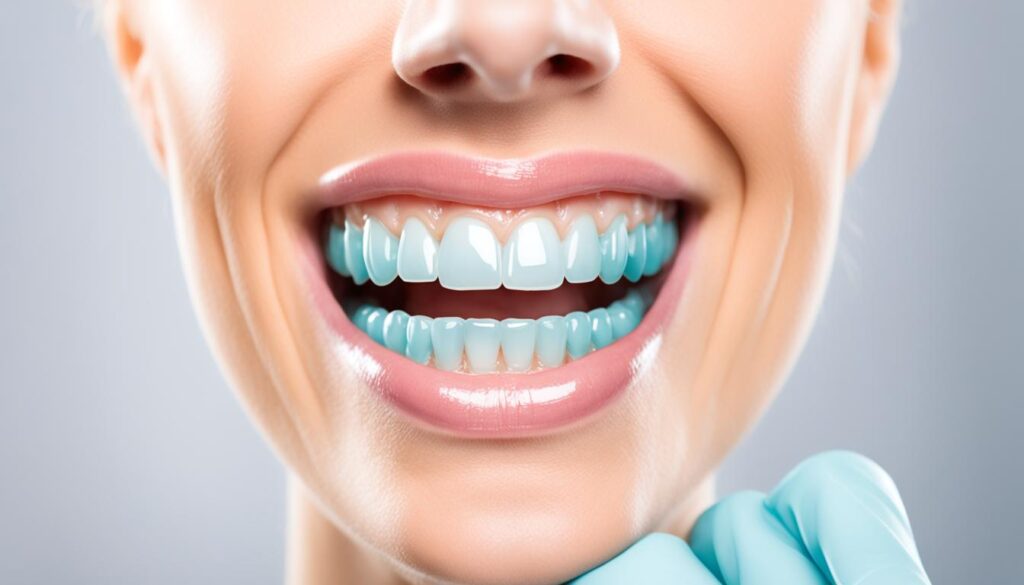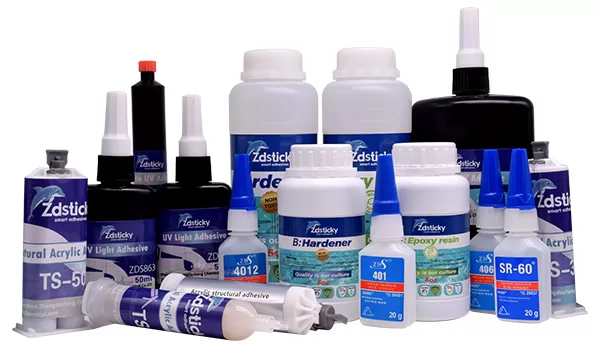Can dental fillings look good and last a long time? Yes, with composite resin, a modern dental solution. It’s changed how we fix teeth with damage or decay. Composite resin blends well with your teeth and lasts a long time.
This article will explore dental composite resin in detail. We’ll look at what it’s made of, its types, how it’s used, its benefits, and some downsides. It’s perfect for dental pros or anyone wanting to know more about this top dental material.
Key Takeaways
- Composite resin provides both functional and aesthetic solutions in dentistry.
- It is highly valued for its ability to mimic natural tooth color seamlessly.
- The material is composed of a resin-based matrix and inorganic fillers, offering strength and versatility.
- Different types of composite resin cater to specific dental needs.
- Understanding its composition and application techniques is crucial for optimal performance.
What is Composite Resin?
Composite resin has changed the game in cosmetic and restorative dentistry. It’s a tooth-colored material used for composite resin uses like fillings and dental bonding. Unlike old metal fillings, it looks better and is a big step forward.
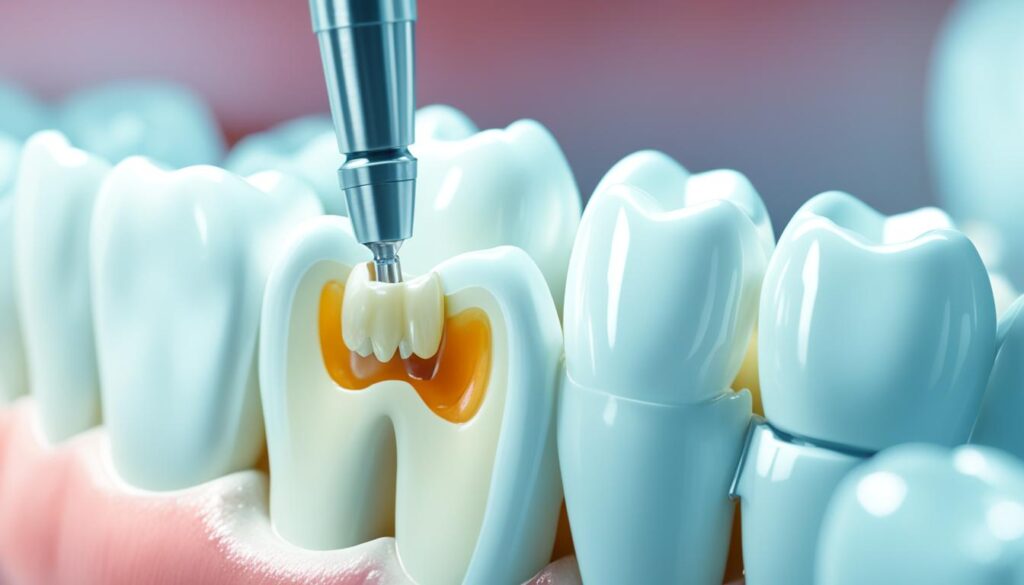
Is resin-based composite a filling? Yes, it is. Dentists use it to fix cavities and repair teeth. It blends in with your teeth’s color and can be shaped to fit perfectly, making it look natural and work well.
The evolution of composite resins has led to its use in many areas. It’s not just for teeth; it’s also in public vehicles, wall panels, and more.
Dentists like it because it sticks well to teeth, making them stronger. It’s used for more than just fillings. It can reshape teeth, close gaps, and make teeth look better, showing its many uses.
Switching from metal to composite resin fillings shows how important looks are in dentistry today. People want treatments that are good for their health and look good too. So, composite resin is a top choice for those who want both looks and function in dental care.
The Composition of Composite Resin
Understanding what makes composite resin work well in dental fillings is key. This section explains the three main parts of composite resin: the organic polymer matrix, inorganic fillers, and coupling agents. Each part is crucial for the resin’s success in dental work.
Organic Polymer Matrix
The organic polymer matrix is the base of composite resin, giving it shape and flexibility. It’s made from monomers like bis-GMA and UDMA. This matrix keeps the resin together and lets it adapt to the tooth shape. Dentists can shape it easily, making fillings precise and comfortable.
Inorganic Fillers
Inorganic fillers add strength and durability to composite resin. They include quartz, silica, or glass. These materials make the resin hard and resistant to wear. This makes the resin last longer and keeps the filling in shape and working right.
Coupling Agents
Coupling agents are key to holding the resin and fillers together. They use silane compounds to create a strong bond. This bond is important for keeping the filling strong and lasting longer. For example, using a strong clear epoxy resin shows how important these agents are.

These components work together to make composite resin great for dental use. They show how important it is to balance different materials. The need for better composite resins is growing, thanks to new materials science and a focus on lasting dental care.
Different Types of Composite Resin
Choosing the right composite resin is key for dental work. It depends on the filler size and type. We’ll look at microfilled, macrofilled, hybrid, and nanocomposites. Each has its own benefits and uses.
Microfilled Composites
Microfilled composites are great for their smooth finish and polishability. They have tiny fillers that give a shiny look. This makes them perfect for front teeth where looks matter a lot.
Macrofilled Composites
Macrofilled composites have big fillers for strength. But, they can be rough and harder to polish. They’re best for back teeth because they’re strong.
Hybrid Composites
Hybrid composites mix the best of microfilled and macrofilled. They have both small and large fillers. This gives a good mix of strength and looks. They’re used for many dental needs.
Learn more about self-leveling epoxy resin used in professional settings.
Nanocomposites
Nanocomposites are the newest in composite resins. They use tiny fillers for better strength and a smooth surface. They’re strong and look good, making them a top choice for many dental uses.
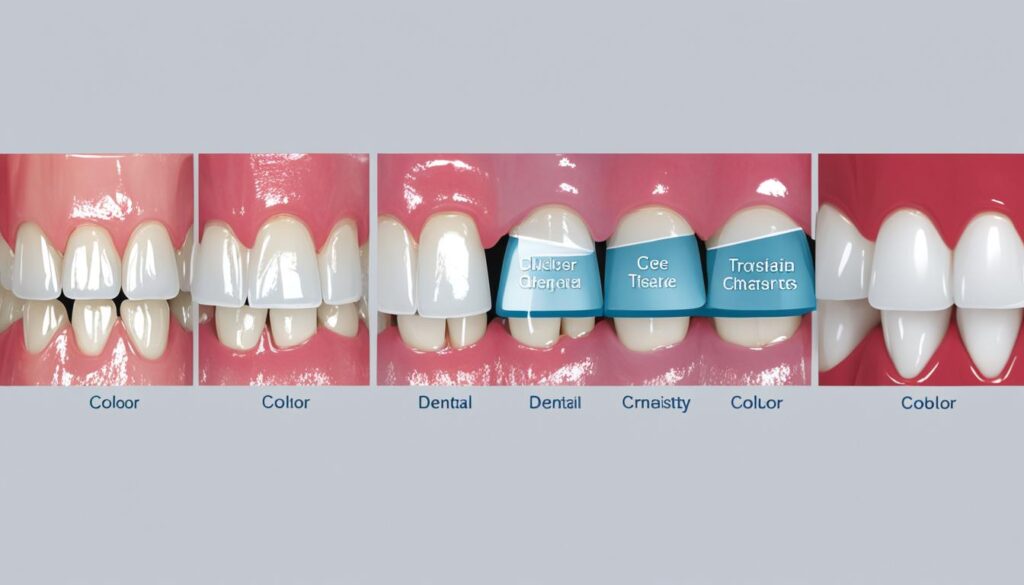
For those looking into other resin uses and products, epoxy resin offers a wide range for various industrial needs.
| Type | Filler Size | Primary Use | Advantages | Disadvantages |
|---|---|---|---|---|
| Microfilled Composites | Small | Anterior restorations | High polishability, excellent aesthetics | Lower strength |
| Macrofilled Composites | Large | Posterior restorations | High strength | Rough surface, harder to polish |
| Hybrid Composites | Mixed | Both anterior and posterior restorations | Balanced strength and aesthetics | Intermediate properties |
| Nanocomposites | Nano-sized | Various dental applications | Excellent strength and aesthetics | Higher cost |
How Composite Resin is Used in Dentistry
Composite resin is key in modern aesthetic dentistry. It’s used for fillings, veneers, crowns, and onlays. This material makes tooth-colored fillings that look just like your natural teeth.
Composite resin is great for composite restorations. These fix teeth that are decayed or damaged. Dentists clean the tooth, apply adhesive, and fill it with composite. This keeps your tooth working right and looking natural.
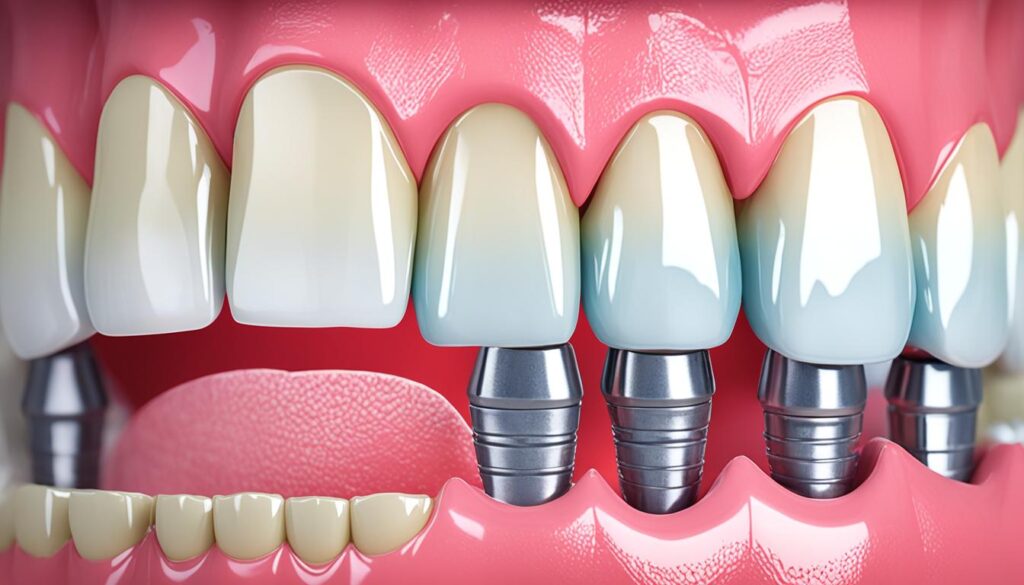
Composite resin is also used for veneers. These thin shells cover the front of teeth to fix things like stains, chips, or gaps. Because it matches tooth color well, it’s perfect for making teeth look better.
Composite resin is also used for crowns and onlays. Crowns look natural and work well with your teeth. Onlays cover part of the tooth and look like tooth enamel, making them strong and good-looking.
Composite resin is used for more than just fillings and crowns. It’s also used for tooth-colored fillings that are barely visible. This material changes how dentists fix teeth, making them look better and work better in aesthetic dentistry.
Advantages of Using Composite Resin
Composite resin is key in cosmetic dentistry, offering many benefits over old materials. It looks great, lasts long, and bonds well to teeth. This makes it a top choice for dental work.
Aesthetic Properties
Composite resin looks just like real teeth, making it perfect for cosmetic dentistry. It can be matched to your tooth color, so your dental work is almost invisible. This means you can smile without worrying about what others see.
Durability
Composite resin is very strong and can handle daily wear and tear. Thanks to new technology, it’s even better at resisting damage. This makes it great for all kinds of dental work, from visible teeth to those in the back.

It’s as tough as some of the best resin systems used in other industries. This means your dental work can last a long time.
Bonding Strength
Composite resin bonds very well to teeth, which means your dental fillings or restorations stay in place. This reduces the chance of problems later on.
Using top-quality epoxy resins shows how important bonding strength is. Composite resin’s strong bond to teeth is why it’s a top pick in cosmetic dentistry.
Disadvantages of Composite Resin
Composite resin has many benefits for dental work, but it also has some downsides.
Sensitivity to Moisture
A big issue with composite resin is how it reacts to moisture during the process. If the area isn’t dry, the resin might not stick well to the tooth. This could lead to the filling not lasting long.
Wear and Tear
Composite resin can wear down over time, unlike some other materials. This is especially true in areas that put a lot of pressure on the teeth, like the back teeth. This means you might need to get it replaced or fixed more often.
Cost
The cost of composite resin is another thing to think about. It’s usually pricier than traditional fillings like amalgam. But, many people find it worth the cost because it looks more natural. For those looking for something more durable, there are other resin options available. These are discussed on ZDS Chemical’s website.
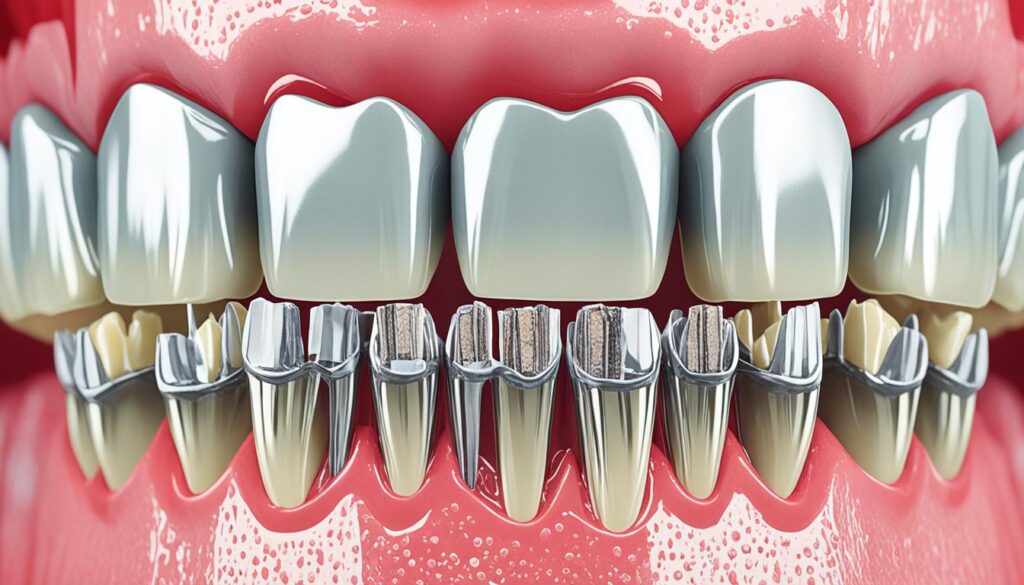
Composite Resin Color Matching
Finding the right composite resin color is key in making dental restorations look natural. Dentists pick colors and ensure they stay the same to match the patient’s teeth well.
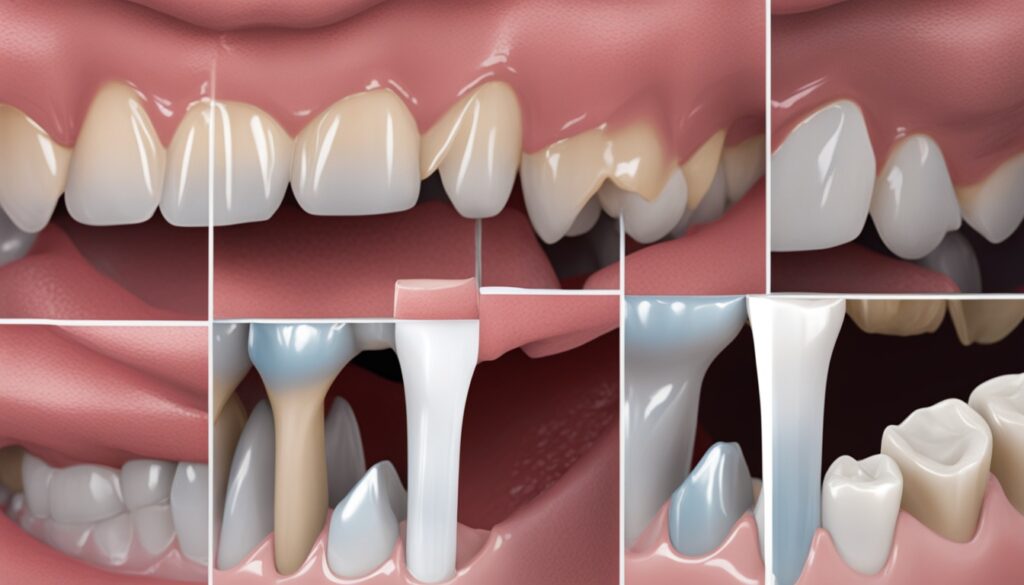
Shade Selection
Choosing the right shade in dentistry means picking a color that looks good with the patient’s teeth. Dentists use guides, tools, and systems to get the best match. They also make sure the lighting is right and involve the patient in choosing.
Color Stability
Keeping the composite resin color looking good over time is important. The color can change if the resin doesn’t resist stains well. To keep it looking great, dentists use high-quality resins that don’t easily change color.
Choosing the right composite material is like picking the best resin for a 3D printer. You need to know about different resin types, like standard, flexible, durable, transparent, and castable. Each type is best for certain projects.
There’s a similar focus on detail in using customized epoxy resin for wood. This process aims to make the wood look better and last longer, fitting the woodworker’s vision.
Application Techniques for Composite Resin
The process of applying composite resin fillings needs careful attention and precise steps. These steps ensure the fillings last long and look good. We’ll look at the key steps: etching, bonding, layering, and polishing.
Etching
First, the tooth surface is etched. A special gel is used to make tiny holes on the enamel and dentin. This helps the composite resin stick better to the tooth.
Bonding
After etching, bonding is the next step. A bonding agent is put on the tooth to make a strong connection with the resin. This step is key for the resin to stick well.

Layering
Layering means putting the resin on in thin layers. This helps the dentist shape the filling to look like the real tooth. Each layer is dried with a special light, making it strong and durable.
Polishing
Polishing is the last step. It makes the filling look better and last longer. A smooth surface is less likely to get plaque or stains, helping the filling work well.
If you’re into DIY projects, you might find interesting the use of epoxy resin in jewelry making or the strength of polyurethane resin.
Maintenance and Care for Composite Resin Fillings
Taking good care of composite resin fillings is key to making them last longer and keeping your mouth healthy. By following some simple steps every day, you can make these fillings last longer and look better.
Regular Dental Check-ups
Going to the dentist regularly is very important for your fillings. Dentists can spot problems early and fix them. This means you can keep your fillings in top shape with regular cleanings and polishings.
Avoiding Hard Foods
It’s important to avoid eating hard and sticky foods to keep your fillings safe. Hard foods can break or crack your fillings. Sticky foods might even pull them out. Eating softer foods helps keep your fillings in good shape.
Oral Hygiene Practices
Good oral hygiene is crucial for dental care for fillings. Brush your teeth twice a day with fluoride toothpaste, floss, and use mouthwash to fight plaque. This keeps your fillings from decaying or getting discolored.
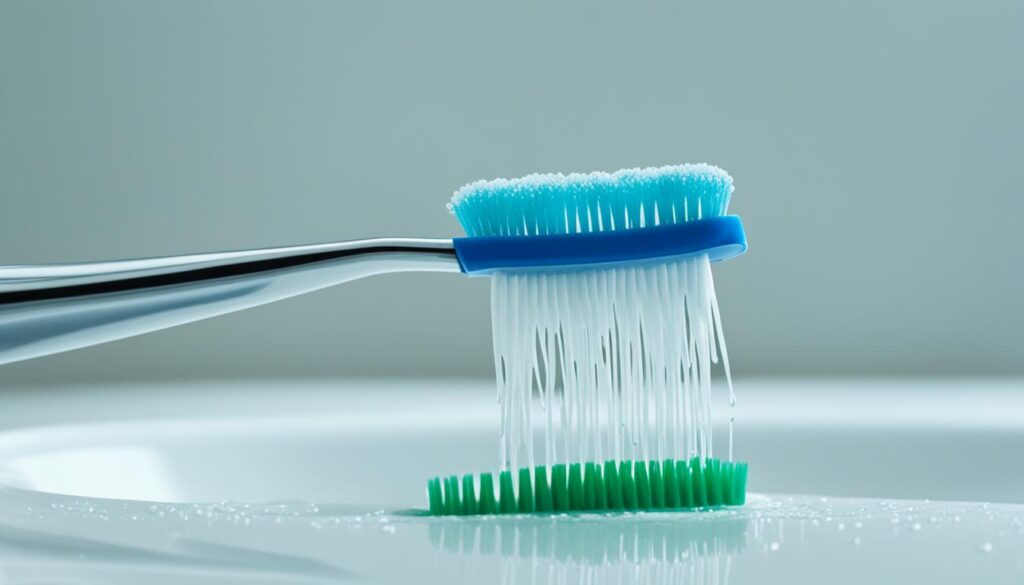
By doing these things, you can keep your composite resin fillings safe and your smile healthy. For more tips on dental care, check out resources on choosing the best materials.
Longevity of Composite Resin Restorations
When thinking about composite resin for dental work, one big question is how long it lasts. On average, these fillings can last 5 to 10 years if placed right.
The reason composite resin fillings last so long is thanks to new technology. This includes better bonding agents and filler particles. These make the fillings strong and reliable.
Factors Affecting Longevity:
- Oral Hygiene: Keeping your mouth clean by brushing and flossing helps fillings last longer.
- Diet: Eating foods that are not hard or sticky can also help keep fillings in good shape.
- Professional Care: Seeing your dentist regularly can catch problems early and fix them.
The skill of your dentist and the quality of materials used also matter. Using the right techniques and high-quality materials helps fillings last longer. For example, ZDS™ offers top-notch resins that make a big difference.
In marine use, ZDS marine epoxy resin is known for its toughness. While dental fillings don’t face the same challenges, they still benefit from the same principles. This means they can last a long time and look good too.
Understanding what affects how long fillings last helps patients get the most out of composite resin fillings. This way, they can enjoy their fillings for many years, feeling good about their looks and function.
Composite Resin vs Other Dental Materials
Choosing the right dental material is key. You need to think about looks, strength, cost, and how long it lasts. Knowing the differences between composite resin, amalgam, porcelain, and gold helps patients and dentists pick the best option for their needs.
Composite Resin vs Amalgam
Composite resin vs amalgam shows big differences. Composite resin looks natural and blends with teeth. Amalgam, though durable, has a silver look and costs less over time.
Composite resin bonds well to teeth, while amalgam is tough against wear. This makes composite resin a good choice for looks and function.
Composite Resin vs Porcelain
Looking at composite resin vs porcelain, porcelain wins for looks. It looks just like real teeth enamel. But, it’s pricier and takes more work to make.
Composite resin is cheaper and can be shaped right away. It’s a good choice for quick, affordable fixes.
Composite Resin vs Gold
Comparing composite resin vs gold, gold is known for lasting a long time and being safe for the body. But, it’s expensive and stands out.
Composite resin doesn’t last as long but is cheaper and looks good. It matches teeth well, making it a smart choice for many.
| Material | Aesthetic Appeal | Strength | Longevity | Cost |
|---|---|---|---|---|
| Composite Resin | High | Moderate | 5-10 Years | Moderate |
| Amalgam | Low | High | 10-15 Years | Low |
| Porcelain | Very High | High | 10-15 Years | High |
| Gold | Low | Very High | 20+ Years | Very High |
Conclusion
Composite resin has changed the way we think about dental care. It’s a reliable and good-looking option for fixing teeth. We’ve seen how it’s better for both patients and dentists in many ways.
It’s flexible and comes in different types like microfilled and nanocomposites. This makes it very versatile and effective.
Choosing composite resin for dental fillings means getting a filling that looks real, lasts long, and bonds well. Dentists use special techniques to make sure these fillings blend in with your teeth. This makes your smile look natural and boosts your confidence.
But, composite resin isn’t perfect. It can be sensitive to moisture, wear out over time, and is more expensive. Still, its benefits often make up for these downsides. If you want the best for your teeth, places like ZDSchemical can help with top-quality products and advice.
FAQ
What is composite resin?
Composite resin is a modern dental material used for tooth restoration and dental bonding. It’s a mix of synthetic resins and fillers. This mix can be shaped and colored to match your teeth, making it great for both looks and function.
What is composite resin used for in dentistry?
Composite resin is used for many dental procedures. This includes fillings for cavities, dental bonding, veneers, and crowns. Its look and versatility make it a top choice for both fixing and improving smiles.
How does composite resin compare to amalgam fillings?
Unlike amalgam fillings, which are silver, composite resin is tooth-colored. It also sticks directly to the tooth, offering better support. This makes it a better choice for looks and function.
What is the composition of composite resin?
Composite resin is made of an organic polymer matrix, inorganic fillers, and coupling agents. These parts work together to make it strong, durable, and good-looking for dental restorations.
What are microfilled composites?
Microfilled composites have tiny particles for a smooth finish and shine. They’re great for making teeth look nice on the front where smoothness matters a lot.
How long do composite resin fillings last?
With good care, composite resin fillings can last 5 to 10 years. But, this can change based on where the filling is, how well you brush and floss, and what you eat.
Are there any disadvantages to using composite resin?
Composite resin is great, but it has some downsides. It can be sensitive to moisture during placement, wear out over time, and is usually more expensive than amalgam fillings.
How is the color of composite resin matched to my teeth?
Dentists use a shade guide to pick a color for the composite resin that matches your teeth. This careful selection and technique makes the filling blend in well with your teeth.
What are nanocomposites?
Nanocomposites are advanced composite resins with nanoparticles for extra strength and shine. They’re used for both front and back teeth for their top-notch looks and durability.
Is composite resin durable?
Yes, composite resin is durable. It can handle everyday chewing and biting well. But, try not to chew on ice or hard things to make it last longer.
What maintenance is required for composite resin fillings?
Keeping composite resin fillings in good shape means regular dentist visits, brushing and flossing well, and avoiding hard foods. This keeps the filling working well and lasting longer.
How is composite resin applied to the tooth?
Applying composite resin involves several steps. First, the tooth is etched, then a bonding agent is applied. Next, layers of resin are added, shaped, and polished for a natural look.


